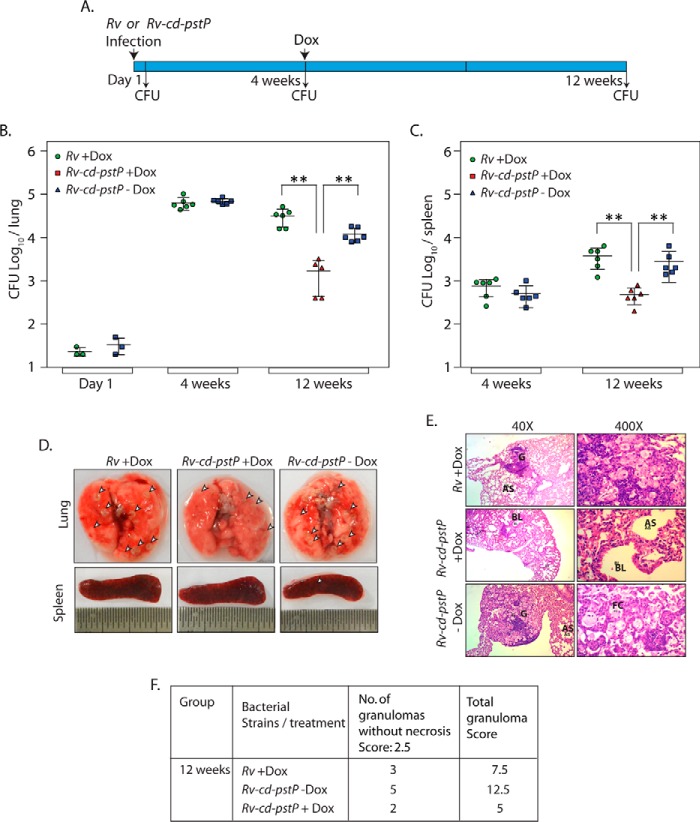FIGURE 9.
Depletion of PstP decreases the bacillary load even in an established infection. A, schematic outline depicting the experiment. B and C, BALB/c mice groups were infected with Rv and Rv-cd-pst. Three mice each from Rv- and Rv-cd-pstP-infected groups were sacrificed 1 day post-infection, and cfu were determined. Six mice each from Rv and Rv-cd-pstP infected groups were sacrificed 4 weeks post-infection, and the bacillary loads in the lungs and spleen were determined. Log10 cfu for Rv and Rv-cd-pstP in the lungs were 4.8 and 4.84, and values for the spleen were 2.66 and 2.56, respectively. Rv-cd-pstP-infected mice were divided into two groups (n = 6) 4 weeks post-infection, and one group was provided Dox (1 mg/kg) for 8 weeks. cfu were enumerated in lungs and spleen 12 weeks post-infection. The bacillary loads (log10 cfu) in the lungs for Rv + Dox, Rv-cd-pstP +Dox and Rv-cd-pstP -Dox were 4.49, 3.14, and 4.08, and bacillary loads in the spleen were 3.57, 2.54, and 3.45, respectively. Error bars, S.E. **, p < 0.01, two-tailed nonparametric t test. D, representative images of lungs and spleen after 12 weeks of infection. Prominent granulomas are indicated by arrowheads. E, ×40 and ×400 histopathology images of lung sections at 12 weeks post-infection. G, granuloma; FC, foamy cells; AS, alveolar space; E, epithelioid cells; BL, bronchial lumen. F, granuloma score of the histopathology sections of E.

